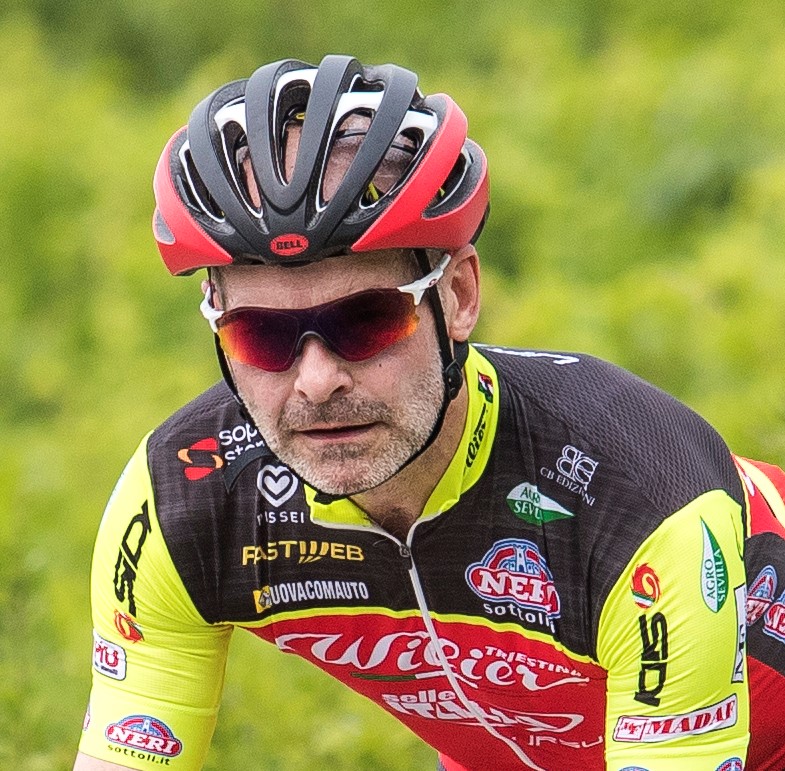Rolling resistance is one of the most important of a range of forces you need to work against in order to move forward when riding a bike.
In a review of bicycle aerodynamics in the Journal of Wind Engineering and Industrial Aerodynamics published in 2020, Malizia and Blocken point out that on the flat, around 90 per cent of the resistance you’re working against when riding a bike at speeds over 40km/h is air resistance – hence roadies' fascination with all things aero.
Uphill, you’re also working against gravity, of course, gaining potential energy that you can put to good effect on the descents.
Beyond that, though, the friction – or rolling resistance – between your tyres and the road or trail is a major contributor to the forces you need to overcome to get going – and to go faster.
Here, we’ll tell you what rolling resistance is, how it’s measured and the factors that influence it. Although it’s often considered a roadie thing, we’ll also explain why it matters a great deal to mountain bike and gravel riders too.
We’ve also got details of three road bike tyres we’ve found in our own tests to offer low rolling resistance.
What is rolling resistance?
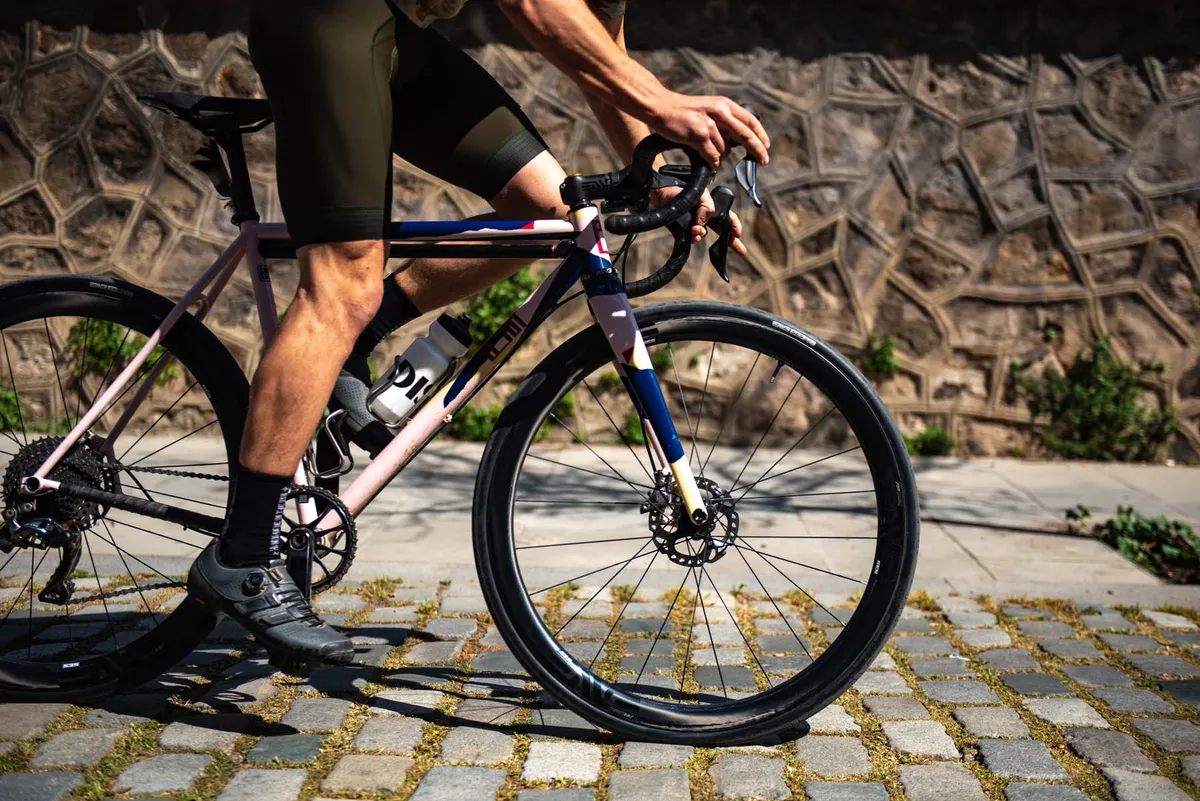
Rolling resistance is simply the energy that is lost when the tyre is rolling. This energy loss comes from a number of sources, with the main one being energy lost to the deformation of your bike’s tyres as you ride.
There’s also a frictional component between the tyre and the surface, which is why riding on a smoother paved road is so much easier than riding on a chip and tar road surface, cobbles or off-road. There’s still more opportunity for energy loss from the compression of a soft surface when it’s rolled over.
The deformation, or hysteresis, a tyre experiences results in heat and sound generation, and loss of energy from the system. In a bicycle tyre, it’s affected by the tyre’s width, diameter and pressure. Other factors, such as the flexibility of the tyre's casing and the composition of the rubber compound used in the tread, also play a part.
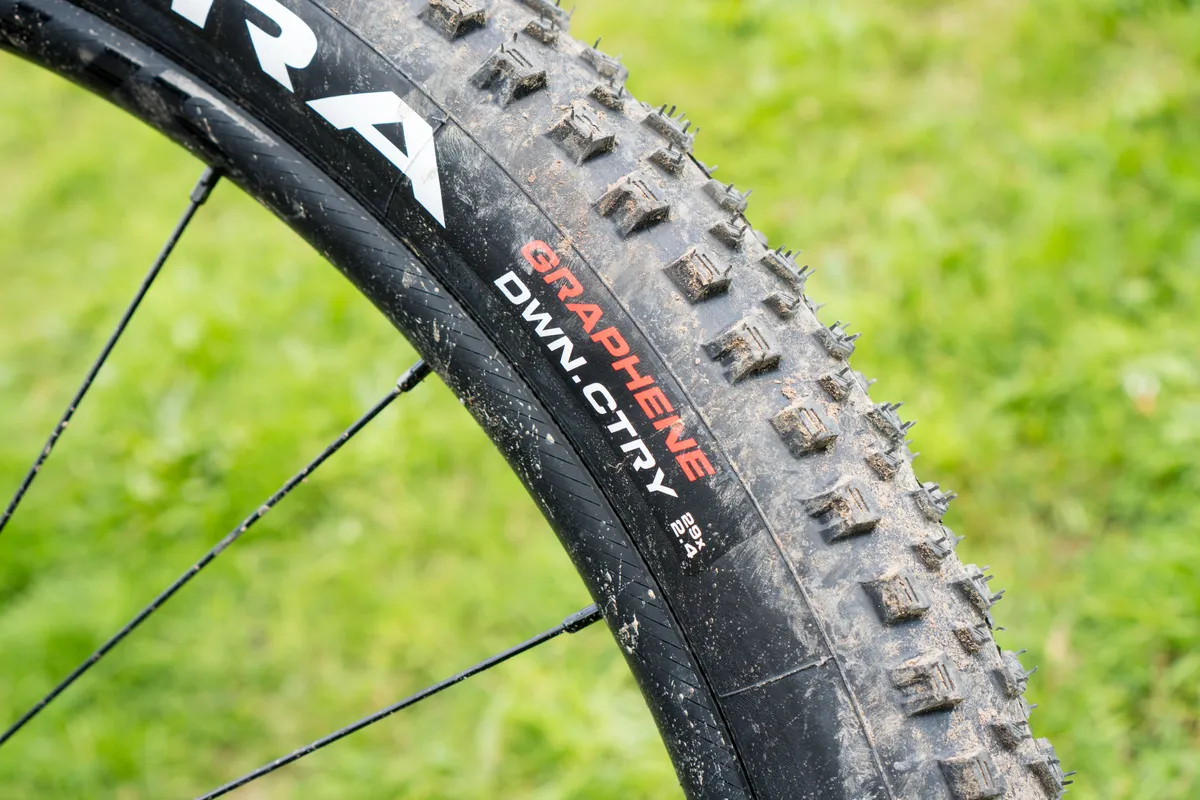
Replacing some of the carbon black in a tyre compound with silica can reduce energy loss to hysteresis and thus rolling resistance, which is why performance bicycle tyres often include silica. Graphene is claimed to have similar effects and is used by Vittoria in its high-performance bicycle tyres.
If you’re riding a time trial or race, you may be prepared to sacrifice tyre longevity and puncture protection for increased speed. Racing tyres typically have thinner treads and casings, and may not even include a puncture protection layer.
On the other hand, if you ride on rough roads or trails, or simply hate fixing punctures (don’t we all?) you may be prepared to sacrifice some increased rolling resistance for better flat protection and grip, and increased tyre mileage.
Why does rolling resistance matter?
Rolling resistance is one of the most tangible forces slowing you down, but also one of the easiest to do something about. After aerodynamic resistance, it’s a large chunk of the resistance you encounter when riding – and at lower speeds may equal or exceed it.
Pretty much every cyclist wants to either ride faster, ride further or ride with less effort and reducing rolling resistance is one of the easiest, lowest-priced ways to achieve this. As Schwalbe points out, "a cyclist has only (very limited) physical power which they want to apply as efficiently as possible".
It’s relatively cheap to choose tyres that lower your rolling resistance, but which are well-adapted for the conditions and places in which you’re riding. Optimising your tyre pressure for where you’re riding is free.
How is rolling resistance tested?

Rolling resistance is typically measured for a tyre using a device with a rotating drum, usually metal, which is powered at a specified speed by an electric motor. It can be coated or clad with a material to simulate a real road surface.
The tyre to be tested is mounted on a test wheel and inflated to a predetermined pressure. It’s placed in contact with the drum, with pressure applied to the wheel to simulate a rider’s weight deforming the tyre.
The system measures the excess power or torque required to keep the drum rotating at the specified speed and this is used to determine the tyre’s rolling resistance. The run is typically performed multiple times to ensure accuracy and repeatability, and there’s usually a warm-up period before measurement to ensure the system and tyre have equilibrated.
Bicycle tyre rolling resistance is typically expressed in terms of watts, because this is a currency many cyclists are familiar with, although there are other ways to express the measurement.
The main alternative is the coefficient of rolling resistance, or Crr, which is the force required to overcome rolling resistance, divided by the wheel load. In scientific units, this would be measured in Newtons per kilogram.
Rolling resistance of clinchers, tubeless tyres and tubulars compared

One factor in the rolling resistance of a bicycle tyre is the friction between the inner tube and the tyre casing, which occurs when the tyre deforms under load.
Bicyclerollingresistance.com tested the Continental GP 5000 S TR tyre in 25mm width at a range of pressures. The tyre was set up tubeless with sealant and its rolling resistance assessed against the same tyre mounted with a range of 10 inner tubes, with TPU, latex and butyl tubes tested.
It found an increase in rolling resistance of between 0.2 watts and 3.8 watts when using a tube over the tubeless setup.
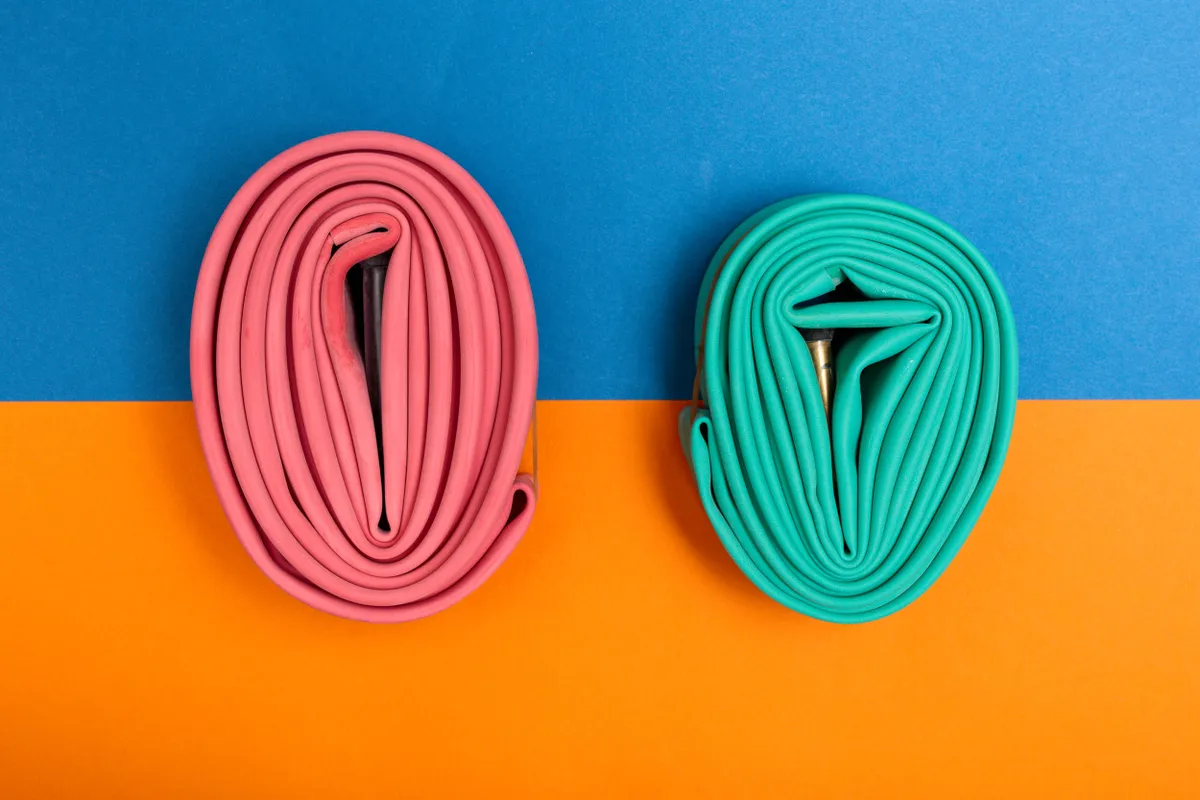
Latex inner tubes have the least effect on rolling resistance, with most TPU inner tubes performing better than butyl tubes.
The site concluded that, in a tubeless tyre, running without an inner tube was most efficient. If you do want to use inner tubes, it’s better to use the non-tubeless GP 5000 clincher than the tubeless tyre. It will roll faster, is lighter and is cheaper.
Tubular tyres, like clinchers, have an inner tube. But the higher price of tubulars and their performance orientation means that the inner tube may be latex or occasionally TPU, as in the Pirelli P Zero Race SL tub, so their rolling resistance may be comparable to a clincher tyre with a latex inner tube.
The cotton casing’s higher thread count may also help to lower rolling resistance, but Bicycle Rolling Resistance found that even the type and quantity of glue used and how long it had dried could affect the result, so it wasn’t able to derive any definitive conclusions from its comparative testing of tubs.
Generally, the difference in rolling resistance between running tyres tubeless or with a latex or TPU inner tube is minimal, so you can pick and choose based on your own preferences.
However, tubeless setups also provide an extra element of puncture protection thanks to the sealant used to make them airtight, which can be useful in many scenarios.
How does rolling resistance vary with tyre width?
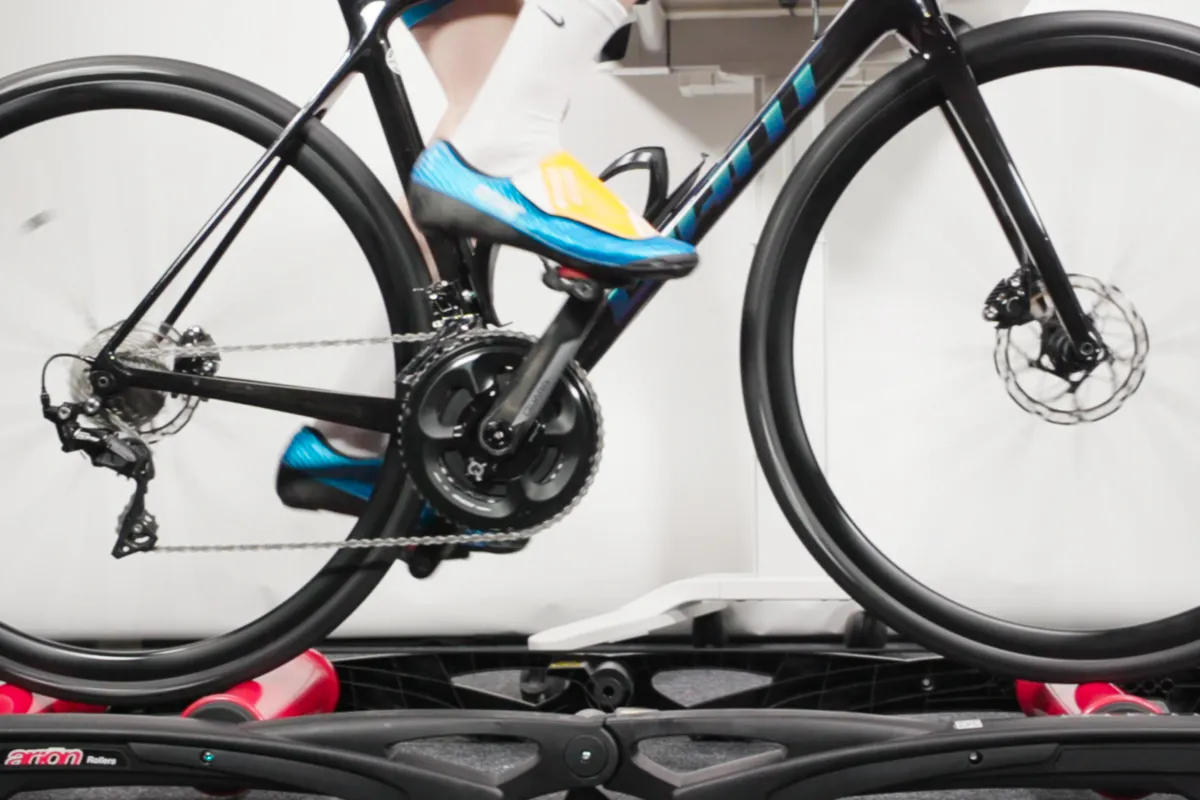
Our own Simon von Bromley performed a detailed test of two different widths of the Pirelli P Zero Race TLR, 26mm and 30mm, to assess if wider tyres are faster. The result was: it depends.
Indoors, on rollers, 30mm tyres required less power to maintain the same speed when both tyres were run at the same pressure.
This is because, at equal pressures, a wider tyre deforms less due to the wider, shorter contact patch.
When tyre pressure was adjusted to roughly account for real-world tyre pressures, however, the narrower tyre was more efficient.
In theory, if you could perfectly adjust the tyre pressures in each width to offer the same-sized contact patch, the rolling resistance should be equal.
In practice, the key takeaway is that wider tyres do not roll slower than narrow ones on perfectly smooth surfaces, and may roll faster on rough roads – where greater compliance and grip is required – because they offer more suspension and a greater surface area for cornering.
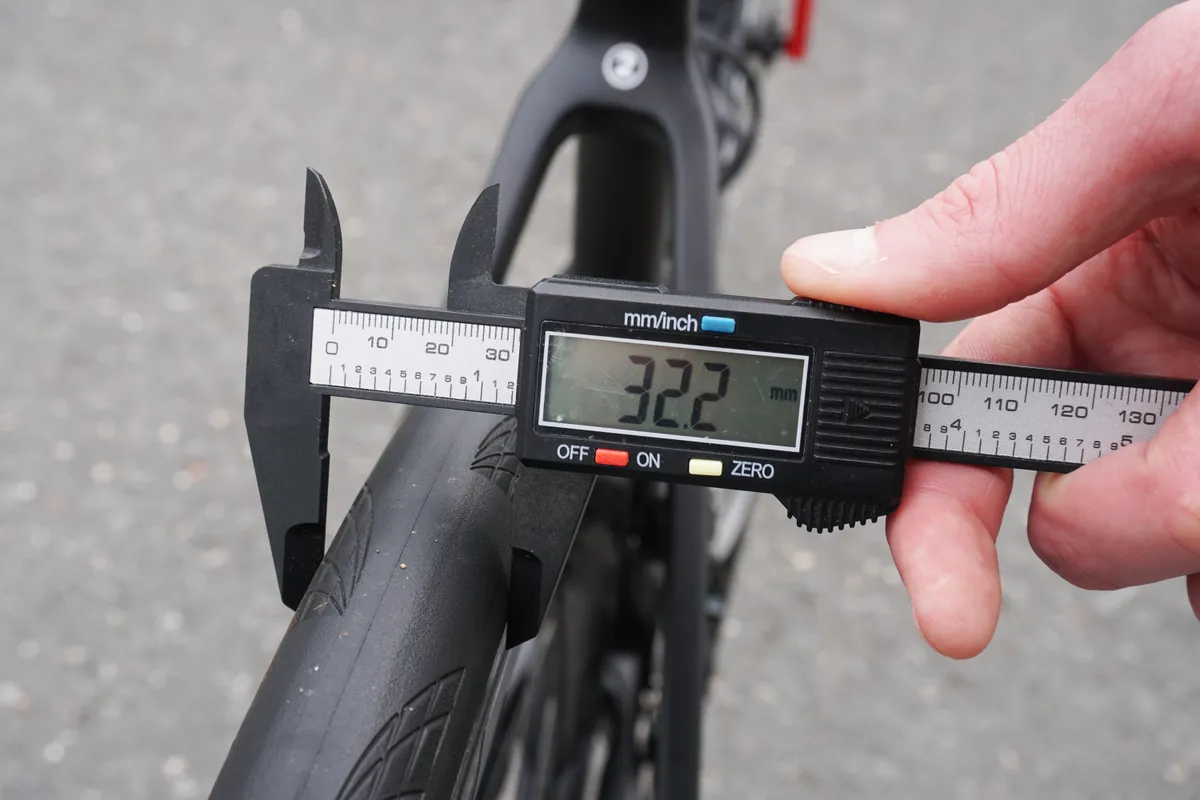
This is why even at the Tour de France, we found that pros are opting for tyres over 30mm in real-world width.
As a result, you should pick your tyre size based on the terrain you’re riding on and the objectives of your ride.
Does rolling resistance matter for mountain and gravel bikes?

The short answer is yes, but less so than for road bikes. For many mountain bike disciplines and for gravel riding, additional rolling resistance is a worthwhile trade-off to remain rubber-side down on the trail.
Many elite gravel racers are choosing ultra-wide tyres for gnarly off-road races such as Unbound.
Tyres with lighter or thinner casings – which usually equates to lower rolling resistance because they require less energy to deform – may also be more prone to punctures. For enduro or riding on hard trails and gravel, that may be a compromise not worth making.
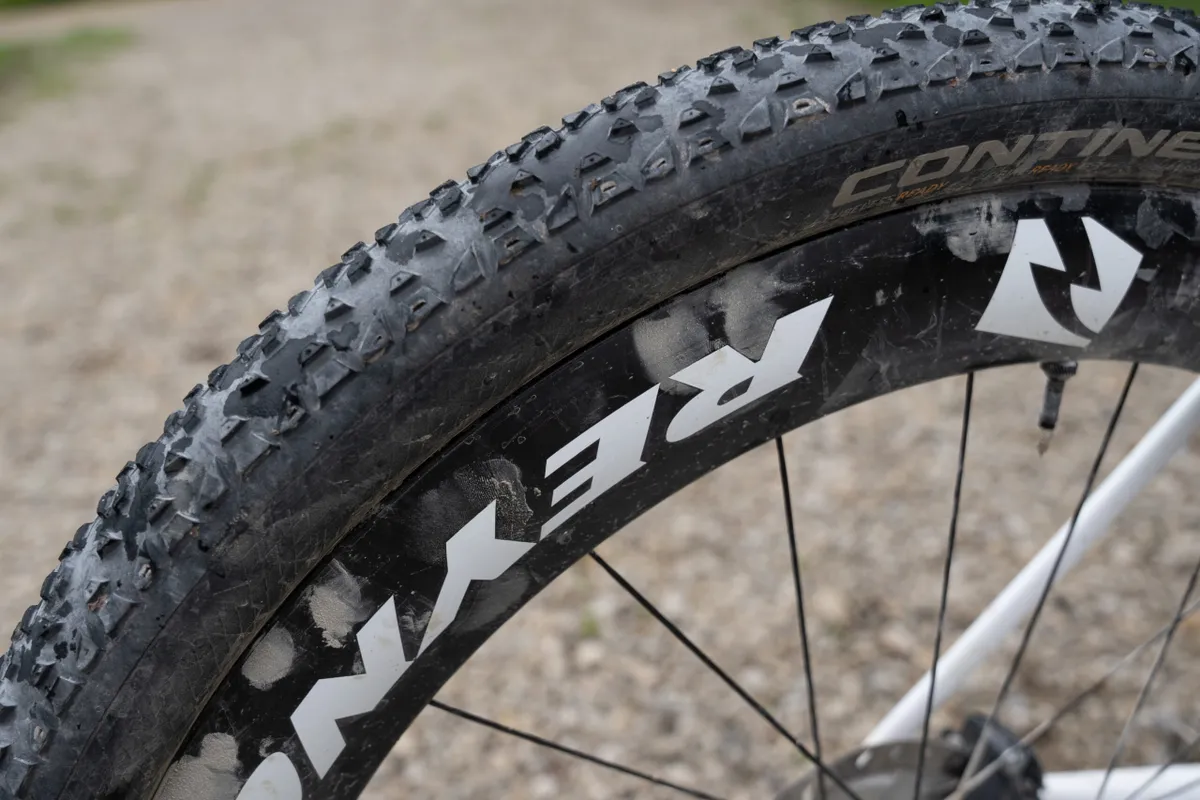
The one arena where an MTB rider might be prepared to trade some grip for lower rolling resistance is cross-country racing, where the ability to cover more ground faster is an advantage, provided the route isn’t too tricky. The same is true for gravel riders.
If your rides regularly take in a significant amount of on-road or smoother trail riding, a slicker, lighter tyre that rolls faster can make it quicker and easier to get to more interesting riding.
For most types of mountain biking and for gravel, grip is a greater priority than low rolling resistance though.
Fastest road tyres 2025

If you plan to replace or upgrade the tyres on your road bike, our guide to the best road bike tyres should help you choose. Our buyer’s guide includes the 13 top-performing models we’ve reviewed at BikeRadar, with considerations including rolling resistance.
We’ve also been more scientific though, taking eight top-performing fast road bike tyres in size 700x28c to the Silverstone Sports Engineering hub to measure their rolling resistance on its bike tyre rolling resistance rig.
This consists of a motor-driven drum with a torque meter used to measure the tyre’s resistance. There are more details of the protocol in the feature linked above. We also tested them in the real world to determine their ride quality, grip and how easy it is to set them up on your bike.
Here are three tyres that we found to offer the lowest rolling resistance of the bunch.
As always, though, having the absolute lowest rolling resistance isn’t everything.
For example, although Challenge’s Criterium RS tyres tested fast in the lab and offer superlative ride quality in the real world, they were a pain to set up tubeless – which might be a deal breaker for many riders.
Pirelli P Zero Race TLR
SQUIRREL_TEXT_13097797

This Pirelli P Zero Race had the lowest rolling resistance in our test, at 11.86 watts. The tyre was updated in early 2023, with a thinner carcass incorporating Aramid fibres and improved puncture protection – as well as offering a claimed reduction in rolling resistance.
We noted the excellent ride feel and grip, although the tyre comes up quite narrow, with a rounded profile, which has a slight effect on handling – although not comfort. At 310g in size 28mm, it’s a little heavier than some tubeless tyre competitors too.
Pirelli also recently launched the P Zero TLR RS, promising lower weight and rolling resistance, as well as improved compatibility with hookless rims. We’ve yet to test this new model, however.
SQUIRREL_13097797
Schwalbe Pro One TLE
SQUIRREL_TEXT_13079493
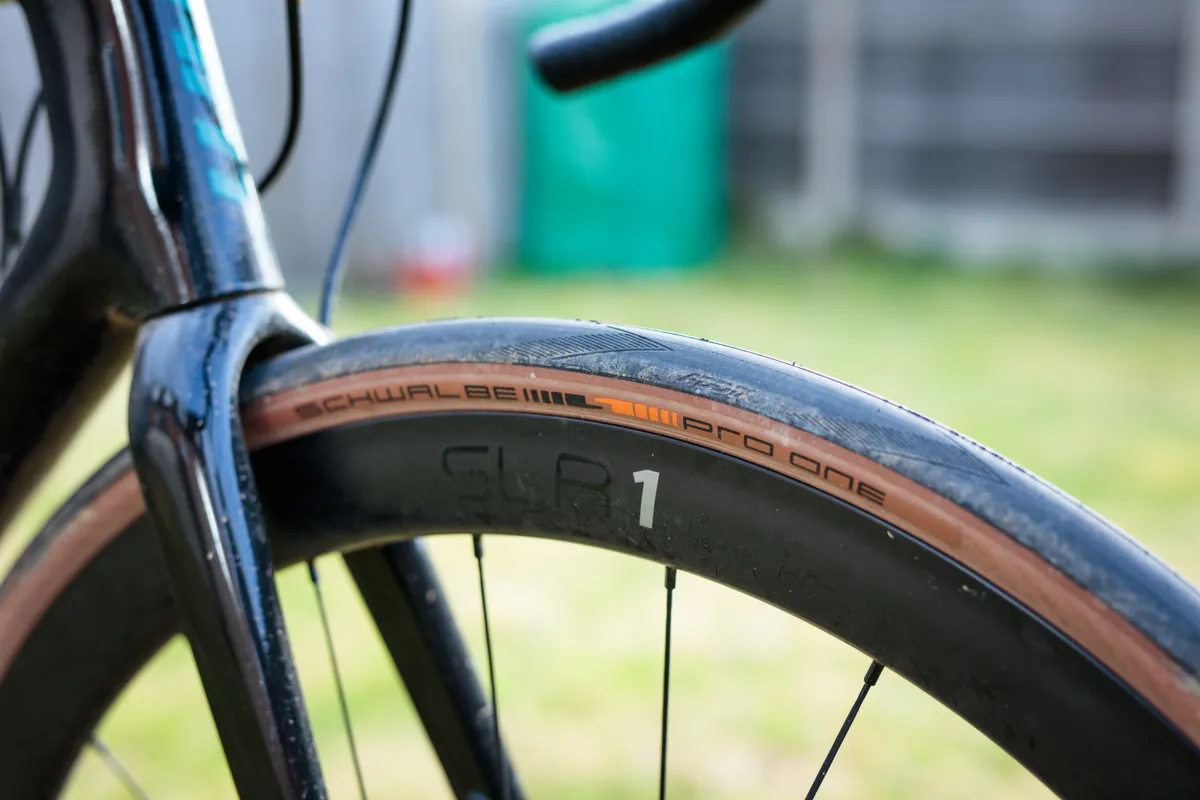
Second by a hair among the eight tubeless tyres tested, the Schwalbe Pro One TLE recorded rolling resistance of 12.08 watts.
When Schwalbe updated the tyre, two claimed benefits were lower rolling resistance and increased cornering grip.
That’s in part due to a new carcass that has only two layers under the tread and three in the sidewalls, but also to a new Addix Race rubber compound.
We measured our 28mm test tyres at 264g each, making them some of the lightest tyres in their class. They felt fast on the road and even emerged unscathed from several hundred kilometres on gravel, run at pressures as low as 40psi / 2.7 BAR.
SQUIRREL_13079493
Challenge Criterium RS
SQUIRREL_TEXT_13200834
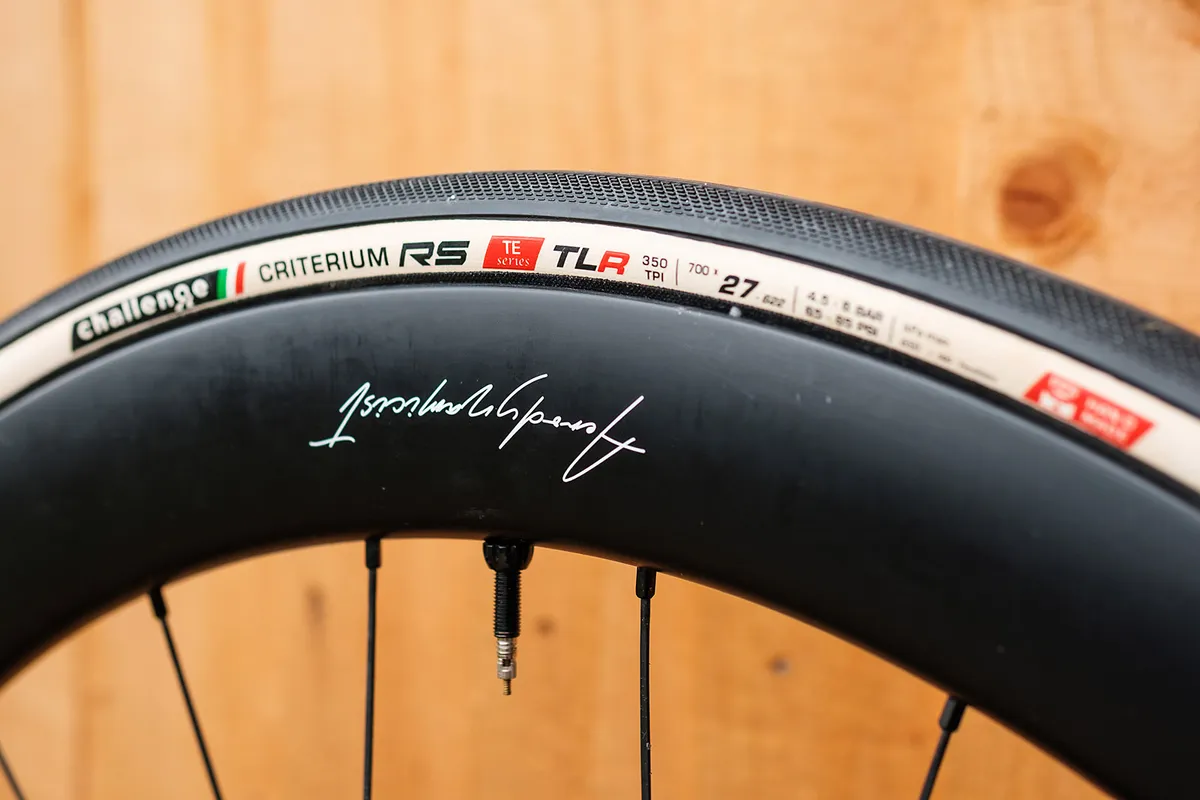
The final podium place in our rolling resistance test went to the Challenge Criterium RS, with a figure of 12.18 watts. It has a supple, high thread-count cotton casing, rather than the nylon of the tyres above, contributing to a low weight of 263g per tyre.
We loved the feeling of free speed from the low rolling resistance, the ride comfort and the grip on offer, although setup and maintenance were tricky. The tyres are only available in 25mm and 27mm widths too, which may make them less attractive to you.
SQUIRREL_13200834
How repeatable are rolling resistance results?

It’s worth noting that the difference in rolling resistance between the majority of tyres we tested was small.
There are a number of other factors that might change how efficient a tyre is on your bike, including the tyre pressure you use, your rim’s internal width and how much you and your bike weigh.
We ran our test tyres at 80psi with a latex inner tube, but this pressure is too high for some wheel/tyre combinations.
For example, there’s a tyre-pressure limit of 72.5psi / 5 BAR for Zipp’s 454 NSW hookless rims.
These wheels also have a 23mm internal rim width that’s significantly wider than the 20mm of the Hunt 54 Aerodynamicist Carbon Disc front wheel on which we tested. Both might change the rolling resistance of the tyre.
There’s a uniform method to measure rolling resistance for motor-powered road vehicles, which is specified by an ISO standard. In contrast, bicycle rolling resistance measurement is up to the individual tester. Bicyclerolingresitance.com almost certainly offers the most comprehensive and consistent set of rolling resistance tests for bike tyres.
Ultimately, there’s a trade-off between rolling resistance and other factors such as aerodynamic resistance, durability and grip, which you need to make when deciding which tyres to use and at what pressure.
